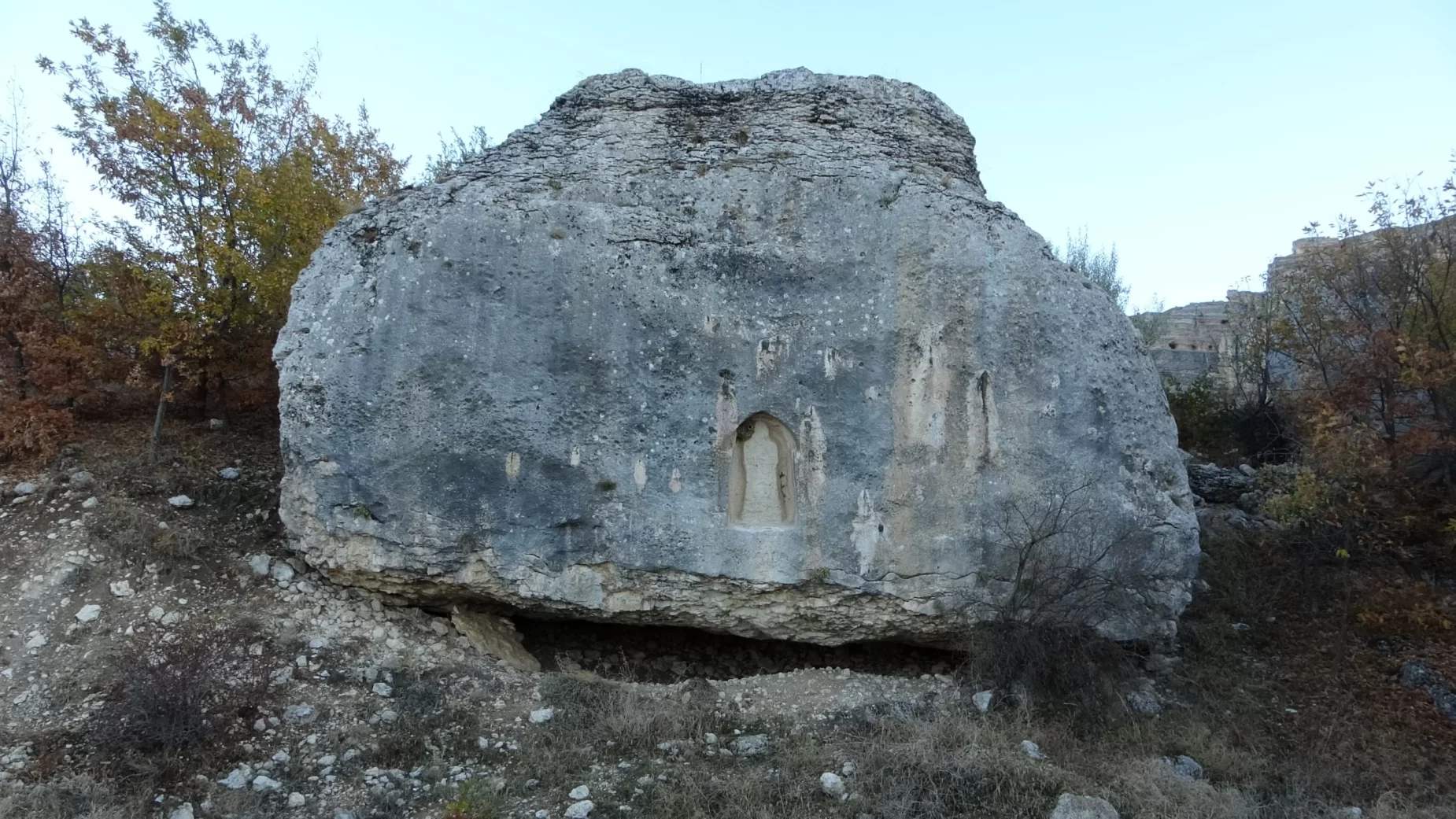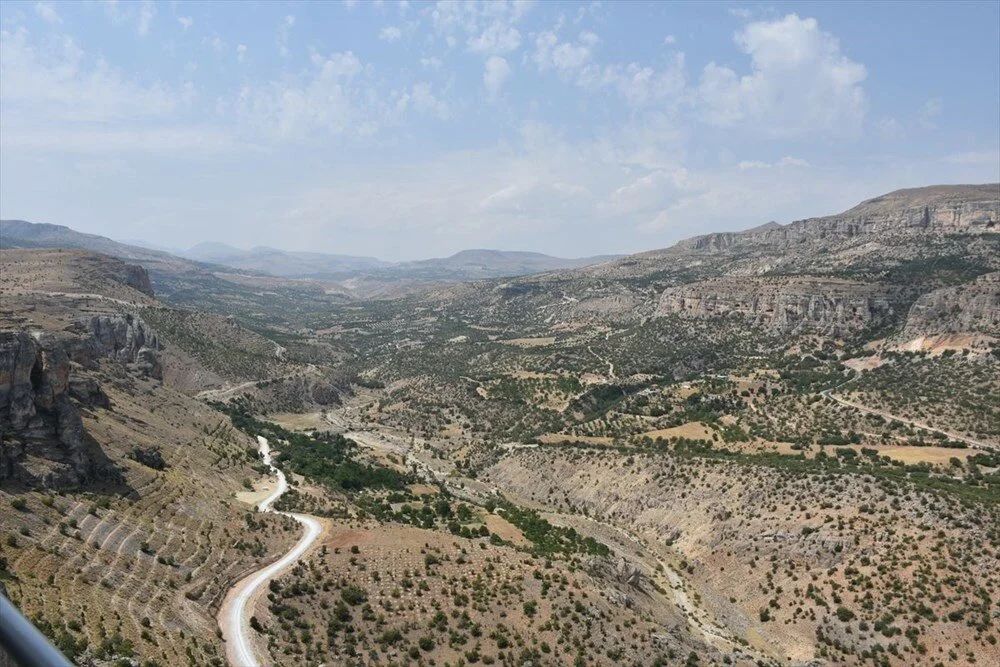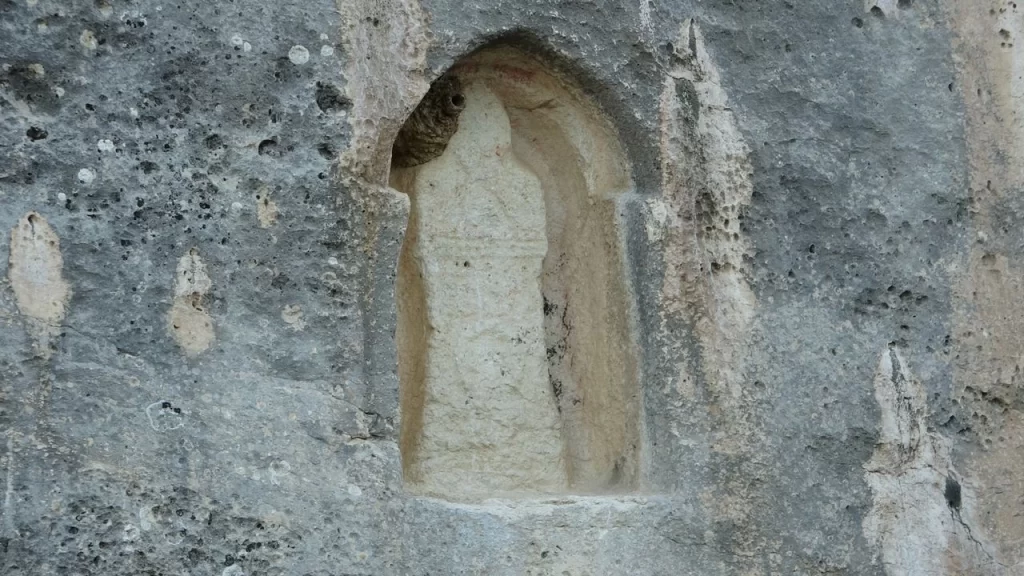
The 2800-year-old Hittite goddess figurine found in the Valley of Levent
A Hittite goddess figurine from the eighth century can be found in the Levent Valley, which was created by a geological formation that dates back 65 million years, B.C.
In the 28-kilometer valley located in Malatya’s Akçadağ district, there are ruins from the Neolithic age as well as traces of the Hittite civilization that lived in the region. The rock relief believed to depict the Sun Goddess of Arinna, the chief goddess of the Hittites, is one of these traces.

The valley has extraordinary cultural importance due to its geological features as well as hosting different civilizations throughout history.
Inönü University Faculty of Fine Arts and Design Lecturer Levent İskenderoğlu stated that as much as the valley stands out with its geological features, it also shows extraordinary features with its cultural reserves and that its importance has increased because it has hosted many civilizations, and said, “The rock relief we are in front of is from B.C. It is a goddess figure from the Hittite period, dating back to the 8th century. This is also a registered protected area. When you examine the figure closely, you can see that she is depicted with her flat skullcap, ringlet hair, thin long beardless face, arched nose and bulging eyes. This is the sun goddess, the chief goddess of the Hittite Kingdom. “It makes me think it’s a representation,” he said.
📣 Our WhatsApp channel is now LIVE! Stay up-to-date with the latest news and updates, just click here to follow us on WhatsApp and never miss a thing!!

Sharing his views on the Hittite goddess figurine, Levent İskenderoğlu said: ‘The natural pigments on the figurine have worn away over time and erosion in its details has emerged. It is not difficult to guess that this approximately 2,800-year-old figurine was once quite detailed and colorful. We can easily say that the people living in Levent Valley hosted an advanced civilization in art with their unique understanding of form and color even 2,800 years ago. Civilizations that have existed throughout history have left traces of their beliefs through art. “This Sun Goddess figurine is one of the rare examples in Anatolia.”
You may also like
- A 1700-year-old statue of Pan unearthed during the excavations at Polyeuktos in İstanbul
- The granary was found in the ancient city of Sebaste, founded by the first Roman emperor Augustus
- Donalar Kale Kapı Rock Tomb or Donalar Rock Tomb
- Theater emerges as works continue in ancient city of Perinthos
- Urartian King Argishti’s bronze shield revealed the name of an unknown country
- The religious center of Lycia, the ancient city of Letoon
- Who were the Luwians?
- A new study brings a fresh perspective on the Anatolian origin of the Indo-European languages
- Perhaps the oldest thermal treatment center in the world, which has been in continuous use for 2000 years -Basilica Therma Roman Bath or King’s Daughter-
- The largest synagogue of the ancient world, located in the ancient city of Sardis, is being restored











Leave a Reply